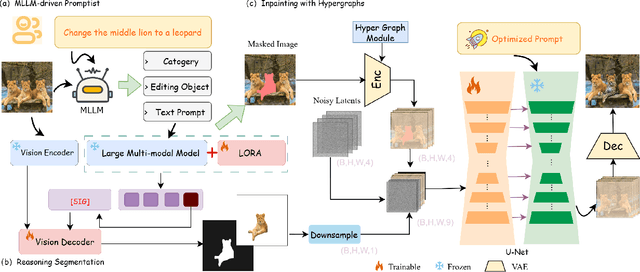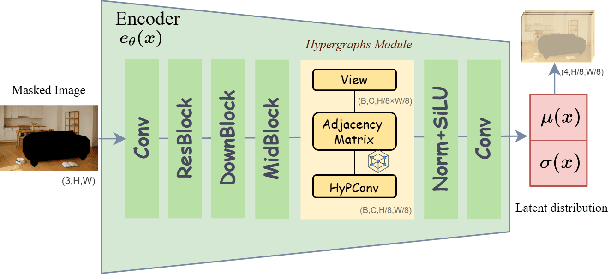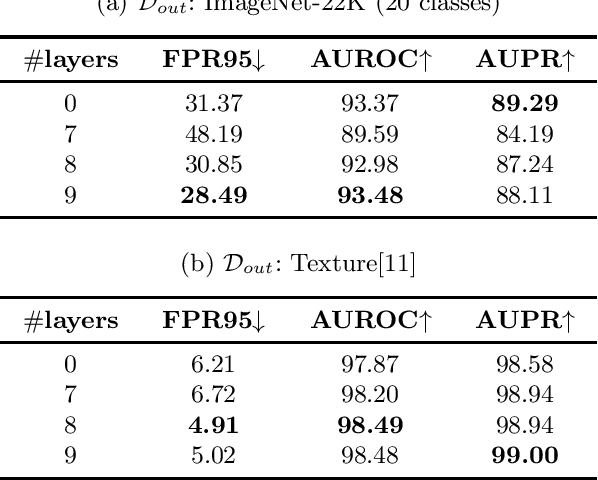Dell Zhang
Decoupling the Image Perception and Multimodal Reasoning for Reasoning Segmentation with Digital Twin Representations
Jun 09, 2025Abstract:Reasoning Segmentation (RS) is a multimodal vision-text task that requires segmenting objects based on implicit text queries, demanding both precise visual perception and vision-text reasoning capabilities. Current RS approaches rely on fine-tuning vision-language models (VLMs) for both perception and reasoning, but their tokenization of images fundamentally disrupts continuous spatial relationships between objects. We introduce DTwinSeger, a novel RS approach that leverages Digital Twin (DT) representation as an intermediate layer to decouple perception from reasoning. Innovatively, DTwinSeger reformulates RS as a two-stage process, where the first transforms the image into a structured DT representation that preserves spatial relationships and semantic properties and then employs a Large Language Model (LLM) to perform explicit reasoning over this representation to identify target objects. We propose a supervised fine-tuning method specifically for LLM with DT representation, together with a corresponding fine-tuning dataset Seg-DT, to enhance the LLM's reasoning capabilities with DT representations. Experiments show that our method can achieve state-of-the-art performance on two image RS benchmarks and three image referring segmentation benchmarks. It yields that DT representation functions as an effective bridge between vision and text, enabling complex multimodal reasoning tasks to be accomplished solely with an LLM.
SmartFreeEdit: Mask-Free Spatial-Aware Image Editing with Complex Instruction Understanding
Apr 17, 2025



Abstract:Recent advancements in image editing have utilized large-scale multimodal models to enable intuitive, natural instruction-driven interactions. However, conventional methods still face significant challenges, particularly in spatial reasoning, precise region segmentation, and maintaining semantic consistency, especially in complex scenes. To overcome these challenges, we introduce SmartFreeEdit, a novel end-to-end framework that integrates a multimodal large language model (MLLM) with a hypergraph-enhanced inpainting architecture, enabling precise, mask-free image editing guided exclusively by natural language instructions. The key innovations of SmartFreeEdit include:(1)the introduction of region aware tokens and a mask embedding paradigm that enhance the spatial understanding of complex scenes;(2) a reasoning segmentation pipeline designed to optimize the generation of editing masks based on natural language instructions;and (3) a hypergraph-augmented inpainting module that ensures the preservation of both structural integrity and semantic coherence during complex edits, overcoming the limitations of local-based image generation. Extensive experiments on the Reason-Edit benchmark demonstrate that SmartFreeEdit surpasses current state-of-the-art methods across multiple evaluation metrics, including segmentation accuracy, instruction adherence, and visual quality preservation, while addressing the issue of local information focus and improving global consistency in the edited image. Our project will be available at https://github.com/smileformylove/SmartFreeEdit.
Multi-Label Out-of-Distribution Detection with Spectral Normalized Joint Energy
May 08, 2024


Abstract:In today's interconnected world, achieving reliable out-of-distribution (OOD) detection poses a significant challenge for machine learning models. While numerous studies have introduced improved approaches for multi-class OOD detection tasks, the investigation into multi-label OOD detection tasks has been notably limited. We introduce Spectral Normalized Joint Energy (SNoJoE), a method that consolidates label-specific information across multiple labels through the theoretically justified concept of an energy-based function. Throughout the training process, we employ spectral normalization to manage the model's feature space, thereby enhancing model efficacy and generalization, in addition to bolstering robustness. Our findings indicate that the application of spectral normalization to joint energy scores notably amplifies the model's capability for OOD detection. We perform OOD detection experiments utilizing PASCAL-VOC as the in-distribution dataset and ImageNet-22K or Texture as the out-of-distribution datasets. Our experimental results reveal that, in comparison to prior top performances, SNoJoE achieves 11% and 54% relative reductions in FPR95 on the respective OOD datasets, thereby defining the new state of the art in this field of study.
BayesJudge: Bayesian Kernel Language Modelling with Confidence Uncertainty in Legal Judgment Prediction
Apr 16, 2024Abstract:Predicting legal judgments with reliable confidence is paramount for responsible legal AI applications. While transformer-based deep neural networks (DNNs) like BERT have demonstrated promise in legal tasks, accurately assessing their prediction confidence remains crucial. We present a novel Bayesian approach called BayesJudge that harnesses the synergy between deep learning and deep Gaussian Processes to quantify uncertainty through Bayesian kernel Monte Carlo dropout. Our method leverages informative priors and flexible data modelling via kernels, surpassing existing methods in both predictive accuracy and confidence estimation as indicated through brier score. Extensive evaluations of public legal datasets showcase our model's superior performance across diverse tasks. We also introduce an optimal solution to automate the scrutiny of unreliable predictions, resulting in a significant increase in the accuracy of the model's predictions by up to 27\%. By empowering judges and legal professionals with more reliable information, our work paves the way for trustworthy and transparent legal AI applications that facilitate informed decisions grounded in both knowledge and quantified uncertainty.
Would You Trust an AI Doctor? Building Reliable Medical Predictions with Kernel Dropout Uncertainty
Apr 16, 2024Abstract:The growing capabilities of AI raise questions about their trustworthiness in healthcare, particularly due to opaque decision-making and limited data availability. This paper proposes a novel approach to address these challenges, introducing a Bayesian Monte Carlo Dropout model with kernel modelling. Our model is designed to enhance reliability on small medical datasets, a crucial barrier to the wider adoption of AI in healthcare. This model leverages existing language models for improved effectiveness and seamlessly integrates with current workflows. We demonstrate significant improvements in reliability, even with limited data, offering a promising step towards building trust in AI-driven medical predictions and unlocking its potential to improve patient care.
Context-Aware Classification of Legal Document Pages
Apr 25, 2023



Abstract:For many business applications that require the processing, indexing, and retrieval of professional documents such as legal briefs (in PDF format etc.), it is often essential to classify the pages of any given document into their corresponding types beforehand. Most existing studies in the field of document image classification either focus on single-page documents or treat multiple pages in a document independently. Although in recent years a few techniques have been proposed to exploit the context information from neighboring pages to enhance document page classification, they typically cannot be utilized with large pre-trained language models due to the constraint on input length. In this paper, we present a simple but effective approach that overcomes the above limitation. Specifically, we enhance the input with extra tokens carrying sequential information about previous pages - introducing recurrence - which enables the usage of pre-trained Transformer models like BERT for context-aware page classification. Our experiments conducted on two legal datasets in English and Portuguese respectively show that the proposed approach can significantly improve the performance of document page classification compared to the non-recurrent setup as well as the other context-aware baselines.
PerCoNet: News Recommendation with Explicit Persona and Contrastive Learning
Apr 17, 2023



Abstract:Personalized news recommender systems help users quickly find content of their interests from the sea of information. Today, the mainstream technology for personalized news recommendation is based on deep neural networks that can accurately model the semantic match between news items and users' interests. In this paper, we present \textbf{PerCoNet}, a novel deep learning approach to personalized news recommendation which features two new findings: (i) representing users through \emph{explicit persona analysis} based on the prominent entities in their recent news reading history could be more effective than latent persona analysis employed by most existing work, with a side benefit of enhanced explainability; (ii) utilizing the title and abstract of each news item via cross-view \emph{contrastive learning} would work better than just combining them directly. Extensive experiments on two real-world news datasets clearly show the superior performance of our proposed approach in comparison with current state-of-the-art techniques.
Making a Computational Attorney
Mar 07, 2023Abstract:This "blue sky idea" paper outlines the opportunities and challenges in data mining and machine learning involving making a computational attorney -- an intelligent software agent capable of helping human lawyers with a wide range of complex high-level legal tasks such as drafting legal briefs for the prosecution or defense in court. In particular, we discuss what a ChatGPT-like Large Legal Language Model (L$^3$M) can and cannot do today, which will inspire researchers with promising short-term and long-term research objectives.
TegFormer: Topic-to-Essay Generation with Good Topic Coverage and High Text Coherence
Dec 27, 2022Abstract:Creating an essay based on a few given topics is a challenging NLP task. Although several effective methods for this problem, topic-to-essay generation, have appeared recently, there is still much room for improvement, especially in terms of the coverage of the given topics and the coherence of the generated text. In this paper, we propose a novel approach called TegFormer which utilizes the Transformer architecture where the encoder is enriched with domain-specific contexts while the decoder is enhanced by a large-scale pre-trained language model. Specifically, a \emph{Topic-Extension} layer capturing the interaction between the given topics and their domain-specific contexts is plugged into the encoder. Since the given topics are usually concise and sparse, such an additional layer can bring more topic-related semantics in to facilitate the subsequent natural language generation. Moreover, an \emph{Embedding-Fusion} module that combines the domain-specific word embeddings learnt from the given corpus and the general-purpose word embeddings provided by a GPT-2 model pre-trained on massive text data is integrated into the decoder. Since GPT-2 is at a much larger scale, it contains a lot more implicit linguistic knowledge which would help the decoder to produce more grammatical and readable text. Extensive experiments have shown that the pieces of text generated by TegFormer have better topic coverage and higher text coherence than those from SOTA topic-to-essay techniques, according to automatic and human evaluations. As revealed by ablation studies, both the Topic-Extension layer and the Embedding-Fusion module contribute substantially to TegFormer's performance advantage.
A Survey on Knowledge-Enhanced Pre-trained Language Models
Dec 27, 2022Abstract:Natural Language Processing (NLP) has been revolutionized by the use of Pre-trained Language Models (PLMs) such as BERT. Despite setting new records in nearly every NLP task, PLMs still face a number of challenges including poor interpretability, weak reasoning capability, and the need for a lot of expensive annotated data when applied to downstream tasks. By integrating external knowledge into PLMs, \textit{\underline{K}nowledge-\underline{E}nhanced \underline{P}re-trained \underline{L}anguage \underline{M}odels} (KEPLMs) have the potential to overcome the above-mentioned limitations. In this paper, we examine KEPLMs systematically through a series of studies. Specifically, we outline the common types and different formats of knowledge to be integrated into KEPLMs, detail the existing methods for building and evaluating KEPLMS, present the applications of KEPLMs in downstream tasks, and discuss the future research directions. Researchers will benefit from this survey by gaining a quick and comprehensive overview of the latest developments in this field.
 Add to Chrome
Add to Chrome Add to Firefox
Add to Firefox Add to Edge
Add to Edge